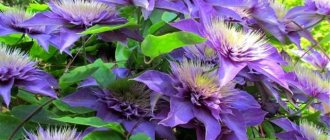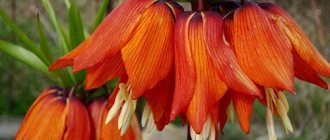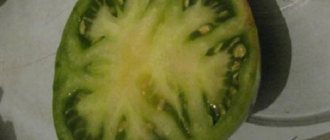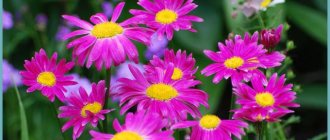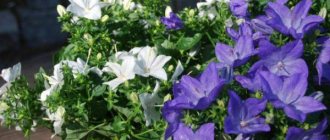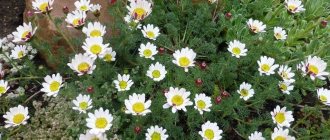09.22.2020 Scientist cat Nature
In the exterior, green is, of course, the color of foliage that surrounds us on all sides, but we mostly do not notice it, we do not distinguish it from others, perceiving it solely as a background that sets off more saturated and bright colors. Many people think that in landscape design this shade is given a secondary role.
Compositions
Green blooms look very warm and cheerful when arranged with other bright red, orange and yellow buds! They also wonderfully complement burgundy and pink flowers, significantly enhancing the depth of their tone. At the same time, one cannot ignore the stunningly beautiful leaves of the popular hosta, which can present a huge range of silver, gray and yellow-green, emerald blue tones.
In this article we will learn the name of green flowers and also give their description.
Parrot tulips
It is worth mentioning separately about tulips, or more precisely, about a group of green-petaled late-flowering plants that are characterized by unusual beauty and long-lasting flowering. The backs of the tulip petals have a yellow-green tint, maintaining it throughout the flowering period. The contrast of shades between the edges of the petals and the middle, painted in different shades, has a stunning look. These yellow-green flowers are used for cutting and landscaping. It is also worth noting that today green-petaled tulips are incredibly popular.
The color of the petals also has a green tint. This is a peculiar group of plants in which the tepals are located horizontally when open and have a notched, irregular, jagged or fringed shape. Due to the wide-open large flowers, as well as the deeply cut edges of the petals, parrot tulips are more reminiscent of the splayed feathers of birds.
All summer the plant blooms small yellow-green flowers, collected in large numbers in false umbrellas. This is a herbaceous perennial plant. The stem, reaching 30 cm in height, rises arched upward. At the same time, the mantle forms a nice cover in semi-shaded places, although it can be successfully grown in the sun.
Tulips of the following varieties have green “strokes” on the petals:
- 'Parrot Insel' (green and white flowers).
- "Parrot King" (yellow-lime-white-green petals).
- "Ear" (pale lilac, a little apricot and rare green spots reminiscent of feathers).
- “Erna Lindgreen” (green stripes on a burgundy background).
- "Apricot Parrot" (red-yellow with green).
Parrot tulips are suitable for borders and borders. Planted along various paths, they will be able to fully demonstrate their amazing beauty.
Tulips
Unlike the capricious rose, tulips are considered one of the most successful plants for decorating seasonal garden beds. In most cases, gardening stores offer so-called green-flowered varieties, that is, those with buds of yellow, orange, red and other shades with stripes and veins of dark green. These are the popular pink Greenland, Hollywood, China Town, and delicate Spring Green and Super Parrot, milky white tulips, and the exotic purple Violet Bird and many, many others. However, among the different varieties of tulips you can find a flower with green petals: this is the variety Brooklyn (Brooklyn) with an inflorescence cup of a very unusual shape and a real miracle of selection - La Bizarre.
Tulips are also used to make flower arrangements. Just 10-15 years ago, bouquets of these flowers, along with mimosas, were considered a symbol of the spring holidays. Today, in any season, you can buy delicate flowers of various shapes and shades - tulips - as a gift. White-green varieties, for example Spring Green, popular in Russia, are usually given as a mono-bouquet, and rare green varieties are often used in tandem with bright flowers to create original compositions.
Amaranth caudate
Many of us have the opportunity in the summer to look at interesting flowers with green flowers called amaranth caudate. This coloring of flowers is generally uncharacteristic for the plant and is very rare. Dark red and crimson flowers are much more common. They are collected in spherical dense balls, which, united into paniculate long (periodically up to 1.5 meters) inflorescences, like tails, fall down. This is an extraordinary sight!
Amaranth paniculata
Amaranth paniculata may have green and white flowers. One of these varieties is “rushnichok”. Its unusualness lies in the inflorescences of a green hue with burgundy, brightly colored tips of the brushes, reminiscent of cross-stitched patterns. Hence the unusual name.
Amaranths, especially tall varieties, look impressive in solitary and group plantings. They are also appropriate near fences and walls, in the background of various flower beds. At the same time, the short ones will find a place in the border or ridge.
Phlox paniculata
These are very popular perennial garden flowers all over the world. Their natural habitat is the southeastern United States. Phlox paniculata varieties come in many colors, including beautiful green. The optimal time for planting is spring or late summer. The plant blooms in June.
Phlox loves water very much. The frequency of watering depends on the degree of aridity of the soil. The soil around the flower should be moist, but not drown in puddles. Water must be absorbed and evaporate. Feeding begins in the second year after planting. On average, it requires 3-4 feedings per growing season.
In recent years, flower growers have begun to grow paniculate phlox at home, decorating loggias and balconies with it.
Green roses
If we consider green flowers (the names of some of them are given in this article), it should be noted that roses have a special place among them. Today it is still a novelty, and little studied at that. Nowadays it is very fashionable to order bouquets of such flowers for various celebrations. They, according to various flower companies, signify abundance, generosity, stability and balance, hence it is believed that they should be given to successful people, in addition, to anyone who wants to become one.
It is important to acquire such a “green talisman” right now, during a crisis. In this case, it is better if this plant is not cut, but alive, pleasing to the eye in your own garden with its unusual flowering. But it is very difficult to find accurate information about green roses, their names, methods of growing them, etc. In different sources you can only find “grains”, which we’ll talk about now.
Varieties of green roses
The green rose flower can be of different varieties - Jade, Limbo, Limona, Melannie. Although what is today considered a green rose is actually a plant with yellow-light green flowers.
One of the best such varieties is the Green rosa variety - these are green flowers, the names of which are often associated with the symbol of a tender feeling of love reborn after a round of life or just emerging.
This information will be of interest to those who want to grow such a bush themselves. This beauty can be created from simple roses. To do this, some flower growers advise planting vyazozheld (or ostrokrov) near the rose bush - this is an evergreen plant distinguished by red poisonous berries and prickly leaves. When it puts out the first shoots, you need to make a small hole in one, into which you then thread and bend a rose twig. Then this “wound” is connected, carefully tying it with hemp rope so that it does not allow air to pass through and does not diverge. When the point on the pink twig produces the first shoot, it is completely freed. In this way, a green flower is then produced on the rose bush.
Reasons for the appearance of green inflorescences before and during the flowering of female happiness
Why the Decembrist does not bloom - reasons
The spathiphyllum plant has a green flower: why? Often, flowering with a green tint is due to incorrect fertilizer application technology. This situation can arise from both an excess and a lack of nutrients. Another reason why the spathiphyllum flower turns green is insufficient lighting in the room. If newly appeared flowers are painted white and then change color, then urgently adjust the lighting conditions in the room.
Proper plant care is the key to timely flowering
Sometimes green flowers grow due to too much light or direct sunlight. The plant's covers may turn green and then die due to a sudden change in temperature. Most often this happens when the temperature drops to +15 ℃. Failure to comply with watering rules and excessive moisture can provoke greening.
Often the cause is the presence of diseases. You can determine that a plant is infected by the following signs:
- the species does not begin to bloom;
- leaves dry out or become covered with black spots;
- spathiphyllum stops growing and developing;
- forms small leaves and flowers.
Additional Information! There are several diseases in which spathiphyllum can bloom with green flowers: root rot, late blight, chlorosis, gommosis, sooty fungus.
Root rot
When infected, the species blooms with green inflorescences. The affected root system becomes covered with red spots. The leaves take on a brown tint. If all parts of the flower are affected, death is inevitable.
Root rot
To save the spathiphyllum, it is urgently transplanted into a new substrate and all its parts are treated with a solution of manganese or Fitosporin. All affected areas are cut off and the wounds are treated with charcoal. The plant needs to be transplanted into completely new and pre-disinfected nutrient soil.
It is important to know ! The infected plant must be separated from healthy specimens. Fungal spores are carried by the wind and multiply instantly. To prevent re-infection, adjust the watering regime and room temperature.
Late blight
High humidity and constant overflow can provoke late blight. Fungal spores infect the root collar, it becomes soft and begins to decompose. Late blight is one of the most dangerous diseases that is almost impossible to cope with. To avoid infection of neighboring species, not only the flower is destroyed, but also the soil in which it grew.
Late blight is a dangerous disease
Chlorosis
The lesion also causes the flower bed to change. The disease occurs due to improper care and unbalanced fertilizer. Chlorosis appears when the root system is damaged, for example, during transplantation. The first signs of the disease are green flowers and new growths on the leaf blades. The spots spread quickly. You can save the plant by completely stopping feeding and adjusting watering rates.
Spathiphyllum chlorosis
Gommoz
Manifests itself in the “shallowing” of the species. Not only the stipules and stems decrease, but also the flowers themselves. The leaves become affected and wither, and then dry out completely. With a prolonged illness, they fall off and the plant is not able to receive the necessary nutrition. As a result, spathiphyllum dies. The infection is most often introduced with running water or transmitted from neighboring plants.
Sooty fungus
Infection is a consequence of the appearance of parasites on the plant. If a scale insect or aphid has settled on the spathiphyllum, the slimy substance they secrete is a favorable environment for the reproduction of spores. This disease leads not only to discoloration, but also to the appearance of a black plaque. Because of this, the process of photosynthesis stops, and the flower begins to hurt intensely. You can save the species using a solution of laundry soap and any insecticidal agent.
Green gladioli
In addition to roses, gladioli can also have green flowers. Of course, this is exotic; such plants are very rare. That's why they are valuable. Moreover, some of these varieties were bred a long time ago and are well known to a narrow circle of unusual lovers and enthusiasts. Thus, in 1978, the Emerald Ripples variety appeared, which is still considered the leader among all green gladioli, as it has the most saturated shade in its group. Its flowers have a round, corrugated shape and are arranged in two rows. They will not leave anyone indifferent.
Also known is a variety called Green With Envey with juicy light green flowers.
Among the new varieties that are popular today are the varieties “Our Garden” (distinguished by strongly frilled light green flowers with pinches in the throat), “Green Malachite” (dark green flowers), and “Green Cockatoo”.
Also included in the green group is the “Golden Cup” variety with greenish-yellow buds.
Features of care
Varieties of green violets are considered more demanding in terms of maintenance conditions than others. This is explained by the fact that the characteristics of their color are directly related to temperature, lighting conditions and regularity of watering.
In general, violets with green flowers are considered not very demanding plants; the main thing is to follow the basic recommendations for caring for them.
However, among these Saintpaulias one can distinguish green violets, which may be difficult to grow:
- LE-Green Rose;
- RS-Green Lagoon;
- Green dragon;
- RS-Green Corals.
Watering
The watering regime is no different from the norms recommended for other varieties of Saintpaulia. It is important to water the plants with boiled water at room temperature.
Do not allow the soil to overflow or, conversely, dry out. Overmoistening of the soil can lead to the development of fungal diseases of the plant's root system.
Violets should neither be poured nor dried.
also recommended to water at the root of the bush , without leaving a drop of water on the surface of the leaves, or to use the wick method of watering.
Air humidity
Increased air humidity will promote regular flowering . You can create it by placing a flower pot on a tray of expanded clay filled with water.
Lighting
Most green violets require intense light due to the rich, dark green color of the foliage.
Those varieties that have a lighter leaf part are able to grow in more shaded conditions.
The most comfortable place to place green violets is considered to be an eastern or western window.
Advice! To ensure uniform formation of the rosette, you need to periodically turn the pot with the plant.
Optimal temperature
The most important criterion influencing the appearance and intensity of green color in Saintpaulia flowers is the temperature regime.
To develop a green tint, violets need to create conditions for a comfortable temperature - no higher than 20 degrees. As it increases, the green color becomes less noticeable, and subsequently disappears completely.
Feeding
Most green violets have wavy foliage, which is a sign of slow plant growth. Therefore, nitrogen-containing fertilizing should be regular and balanced. It is also recommended to ensure that the soil acidity level is close to neutral.

